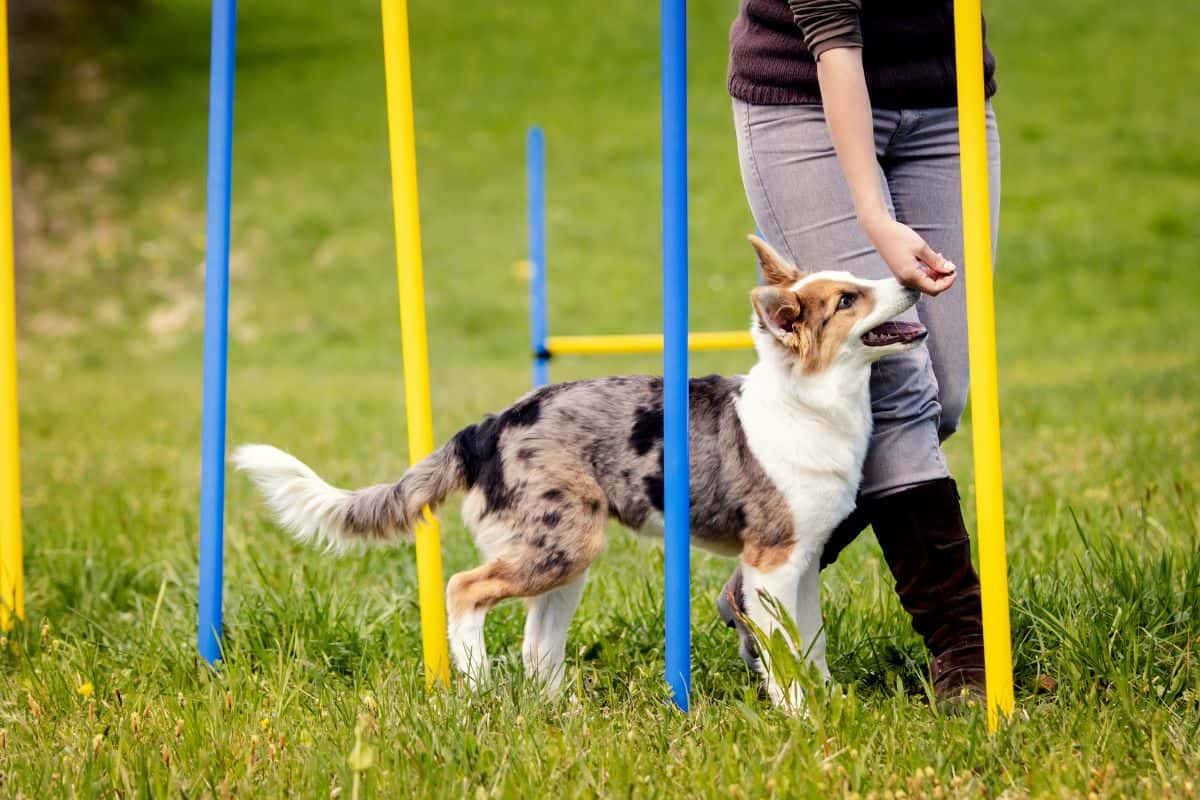Necessary Tips for Successful Dog Training: An Overview for Family Pet Owners
Efficient canine training is a complex procedure that calls for a calculated method customized to both the family pet's temperament and the owner's objectives. Recognizing exactly how to navigate these barriers can significantly enhance the training experience, eventually changing the connection in between proprietor and dog.
Recognizing Dog Actions
Recognizing pet dog actions is essential for reliable training and fostering a harmonious relationship in between canines and their proprietors. Dogs communicate largely through body movement, vocalizations, and actions, making it important for owners to translate these signals properly. Recognizing a pet dog's posture, tail placement, and ear positioning can give insights into its psychological state. For example, a wagging tail does not always suggest joy; it can also signify enjoyment or anxiety.

Socializing plays a substantial function in pet habits; direct exposure to different atmospheres, people, and various other animals can dramatically affect a dog's character. Elements such as type features and private temperament need to direct training approaches, as some types may have details behavior traits that necessitate customized techniques. By understanding these components, owners can create a helpful atmosphere that urges favorable behavior, leading to successful training end results and a deeper bond with their pets.
Developing Consistent Commands
Reliable communication with your pet starts with developing consistent commands. This fundamental component of training is essential for fostering understanding in between you and your pet dog. Uniformity in the commands you use ensures that your pet dog can dependably link particular words or expressions with the wanted behaviors.
When picking commands, choose clear, distinctive words that are easy to set apart and say from each other. Stay clear of using similar-sounding commands that may confuse your pet. Using "sit" and "stay" is proper, but "rest" and "struck" can lead to misunderstandings.
Furthermore, preserve the same tone and volume for every command. Pets are sensitive to vocal signs, so varying your tone can create complication.
It is just as essential to make sure that all family members get on the exact same web page concerning the commands used. A united front in command use will prevent combined signals and reinforce the knowing process.
Favorable Reinforcement Strategies
The power of positive support in pet dog training depends on its capacity to urge desired behaviors via benefits and appreciation. This strategy is based in the principle that actions complied with by beneficial outcomes are most likely to be duplicated. By integrating favorable reinforcement right into your training program, you can successfully shape your pet dog's behavior in a useful fashion.
To apply positive support, it's vital to identify what encourages your pet, whether it be treats, playthings, or verbal praise. When your pet performs a preferred activity, such as remaining on command, immediately award them with a reward or affection. This association between the command and the favorable outcome enhances their understanding.
It's crucial to timing the rewards properly; supplying the reinforcement within seconds of the wanted habits aids your canine make the connection (dog training). In addition, uniformity is essential-- make certain that all family participants make use of the same commands and reward systems to avoid complication

Slowly, you can minimize the regularity of treats as your canine discovers the actions, transitioning to praise or intermittent benefits. This method not just fosters a strong bond between you and your dog yet additionally promotes a positive knowing atmosphere, making educating a delightful experience for both.
Socialization and Communication
Continually exposing your dog to a range of settings, individuals, and various other pets is critical for their social growth. Socialization ought to begin early, ideally during the vital window of 3 to 14 weeks, when pups are most responsive to brand-new experiences. However, older pets can additionally take advantage of recurring socialization efforts.
Present your pet dog to various setups, such as parks, pet-friendly shops, and metropolitan areas. This exposure aids them adjust to numerous stimuli, minimizing stress and anxiety and worry reactions. Urge favorable interactions with other pets and individuals, making sure that these experiences are controlled and secure to promote confidence.
Utilize organized playdates with genteel canines, as this can boost your canine's social abilities and instruct them appropriate habits. Obedience courses and training sessions likewise provide superb chances for socializing, allowing your pet to communicate with others in a supervised setting.
Monitor your pet dog's body language throughout communications, as this will certainly assist you determine anchor their comfort degree. Progressively enhance exposure to more difficult scenarios while guaranteeing that each experience is favorable. A well-socialized canine is more probable to exhibit balanced habits, making them a joy to have in any type of setup.
Attending To Common Training Challenges
Every pet dog proprietor will experience training obstacles at some time, no matter their canine's age or socialization level. Identifying typical concerns such as stubbornness, interruptions, and terror can aid in developing reliable find techniques for enhancement.

Slowly present interruptions as the dog ends up being a lot more efficient in commands. Short, regular training sessions are likewise effective in maintaining focus.
Fearfulness can hinder a pet's understanding procedure. Progressive desensitization to the source of anxiety, coupled with positive support, can assist minimize anxiety. Patience is important; never force a pet into a situation that triggers distress, as this may intensify the issue.
Inevitably, understanding and resolving these typical challenges with an organized method will certainly cultivate an extra effective training experience, strengthening the bond in between pet and proprietor while promoting effective understanding.
Final Thought
In recap, effective dog training relies upon a detailed understanding of canine behavior, the facility of consistent commands, and the application of favorable reinforcement strategies. Socialization plays a crucial function in creating well-adjusted animals, while attending to typical training difficulties needs patience and adaptability. By applying these important methods, animal proprietors can foster click to find out more a solid bond with their dogs and advertise desirable habits, inevitably leading to a harmonious partnership in between humans and their canine friends.
Understanding pet dog actions is essential for effective training and promoting a harmonious partnership in between canines and their owners.Socialization plays a considerable duty in pet dog actions; direct exposure to various atmospheres, individuals, and various other animals can dramatically impact a canine's character.The power of favorable reinforcement in canine training lies in its capability to urge wanted actions via incentives and praise. By integrating positive reinforcement into your training program, you can properly form your canine's actions in a positive fashion.
In recap, effective pet dog training depends on a detailed understanding of canine habits, the establishment of constant commands, and the application of positive support strategies.